|


LEFT:
Early trademark logo RIGHT: Current trademark logo
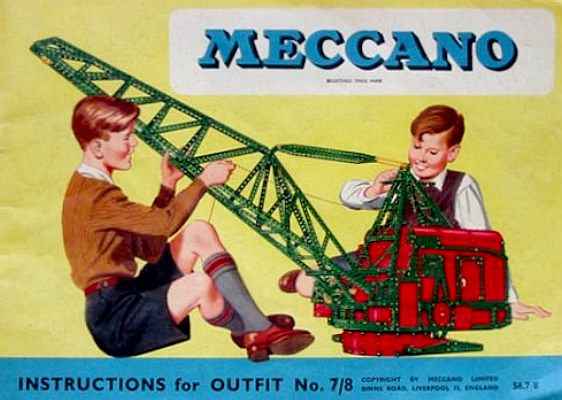
INVENTION
Meccano is a
model construction system
that saves engineers (young and old) from having to source a kit of parts
to be able to make something.
In 1901 Frank
Hornby, a clerk from Liverpool, England, invented and patented a new toy called "Mechanics Made Easy" that was based on the principles of mechanical engineering.
Frank realised that to help youngsters experiment with designs that they
needed easy access to parts. Hence, the model construction kit was born - consisting of perforated metal strips, plates and girders, with wheels, pulleys, gears, shaft collars and axles for mechanisms and motion, and nuts and bolts to connect the pieces.
Development of the idea was carried out in his home workshop. The perforations were at a standard ½ inch (12.7 mm) spacing, the axles were 8-gauge, and the nuts and bolts used 5/32 inch BSW threads. The only tools
(supplied) required to assemble models were a screwdriver and spanners (wrenches). It was more than just a toy: it was
educational, teaching basic mechanical principles like levers and gearing.
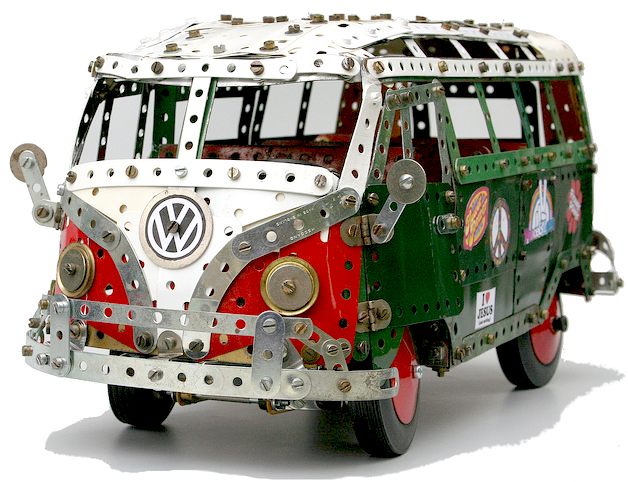
The ideas for Meccano were first conceived by Hornby in 1898 and he developed and
patented the construction kit as "Mechanics Made Easy" in 1901. The name was later changed to "Meccano" and manufactured by the British company, Meccano Ltd, between 1908 and 1980. It is now manufactured in France and
China. "Erector Sets" currently sold in the USA are actually Meccano sets manufactured by Meccano S.N. of France, part of the Nikko Group of
Japan.
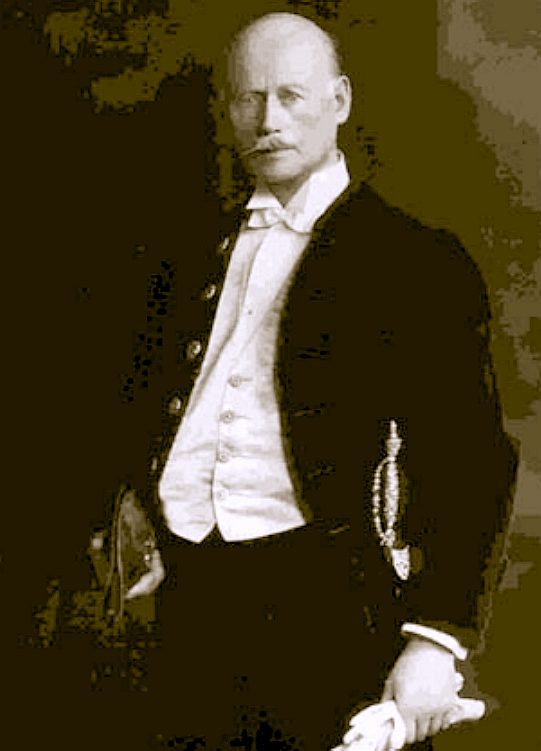
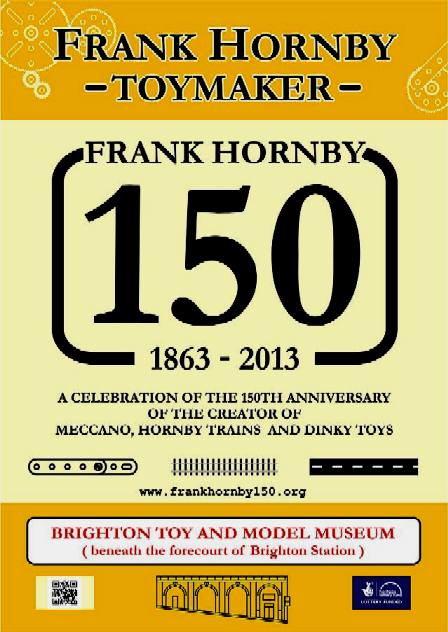
FRANK
HORNBY
Frank Hornby (15 May 1863 – 21 September 1936) was
a businessman and politician. He was a visionary in toy development and manufacture, and although he had no formal engineering training, he was responsible for the invention and production of three of the most popular lines of toys based on engineering principles in the twentieth century:
Meccano, Hornby Model Railways and
Dinky Toys. He also founded the British toy company Meccano Ltd in 1908, and launched a monthly publication, Meccano Magazine in 1916.
Born on 15 May 1863 at 77 Copperas Hill, Liverpool, England, Hornby was the son of John Oswald Hornby, a provision merchant and his wife Martha Hornby (née Thomlinson). At the age of sixteen, Hornby left
school and started working as a cashier in his father's business. On 15 January 1887 he married a schoolteacher Clara Walker Godefroy, the daughter of a customs officer and they had two sons, Roland and Douglas, and a daughter, Patricia. When his father died in 1899, his father's business was closed and Hornby became a bookkeeper for David Hugh Elliot who ran a meat importing business in Liverpool.
Hornby's inventions and initiatives made him a millionaire in the 1930s, and he entered politics in 1931 when he was elected as a Conservative MP for the Everton constituency. Hornby's legacy has persisted long after his death with enthusiasts all over the world still building Meccano models and collecting his toys. The 150th anniversary of Hornby's birth was celebrated in Liverpool and Brighton on 15 May 2013.
PRODUCTION
The parts for Hornby's new construction kit were initially supplied by outside manufacturers, but as demand began to exceed supply, Hornby set up his own factory in Duke Street, Liverpool. As the construction kits gained in popularity they soon became known as Meccano and went on sale across the world. In September 1907, Hornby registered the Meccano trade mark, and in May 1908, he formed Meccano Ltd. To keep pace with demand, a new Meccano factory was built in Binns Road, Liverpool in 1914, which became Meccano Ltd's headquarters for the next 60 years. Hornby also established Meccano factories in France,
Spain and
Argentina. The word "Meccano" was thought to have been derived from the phrase "Make and Know".
The first construction sets had parts that were rather crudely made: the metal strips and plates had a tinplate finish, were not rounded at the ends and were not very sturdy. But manufacturing methods were improving all the time and by 1907 the quality and appearance had improved considerably: the metal strips were now made of thicker steel with rounded ends and were nickel-plated, while the wheels and gears were machined from brass.
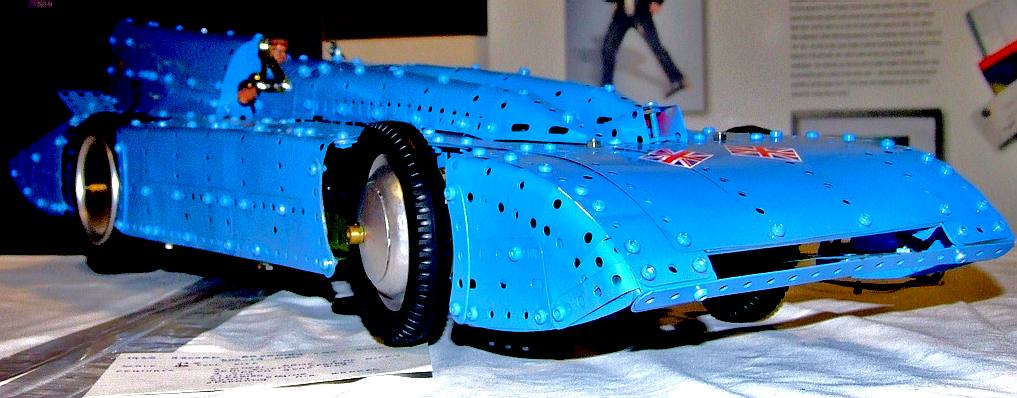
Malcolm
Campbell's Railton Blue Bird by John Macdonald
TAKEOVER
In the early 1960s Meccano Ltd experienced financial problems and was purchased by Lines Bros Ltd (who operated under the brand name "Tri-ang") in 1964. In an attempt to redefine Meccano's image, the colour scheme was changed again, this time to yellow and black plates, with silver strips and girders. The silver was soon replaced by zinc in 1967 when it was found that the silver pieces marked easily. The colours of yellow and black were chosen because they were the colours typically used by most large construction vehicles of the day.
In 1970 electronic parts were introduced, and the current black coloured plates were changed to blue. The range of sets was reduced by one with the deletion of the old No. 9 set and the renumbering of the old No. 0 to 8 sets to No. 1 to 9. The No. 10 set remained unchanged.
Lines Brothers went into voluntary liquidation in 1971 and Airfix Industries purchased Meccano Ltd in 1972. In 1973 outfits 1 to 10 were still available, but new kits were added: Army Multikit, Highway Multikit, Plastic Meccano, Pocket Meccano and two Clock Kits.
While some Airfix divisions were profitable, particularly their model kits, they needed to save money. With unions threatening all out industrial action if there were any job losses, Airfix shut down the Binns Road factory, bringing to an end the manufacture of Meccano in England. Meccano was, however, still being manufactured in France, although under the ownership of General Mills, a
United States toy manufacturer since 1972.
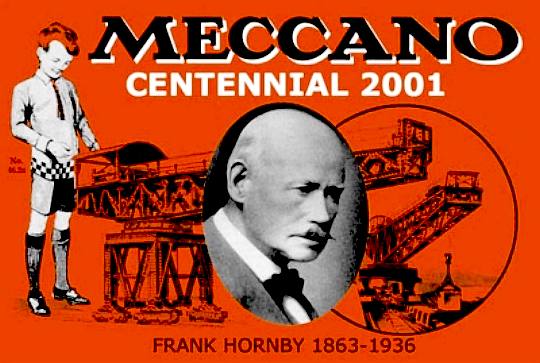
NEW MECCANO
In 1981 General Mills bought up Airfix Industries and with it what was left of Meccano Ltd UK, giving it complete control of the Meccano franchise. All the existing Meccano sets were scrapped and a totally new range of sets were designed for production in France called "Meccano Junior". These new sets included many plastic parts and could only build small models.
In 1985 General Mills left the toy business completely selling off their toy divisions. Meccano was sold out to a French accountant, Marc Rebibo, and, once again, all existing Meccano sets were scrapped. The "Meccano Junior" sets were replaced with three "Premier Meccano" sets and two "Motor" sets (including a six-speed motor) were introduced. Due to high demand, the old Meccano No.1 to No.10 construction sets from 1981 were re-introduced.
In 1989 Marc Rebibo sold what remained of Meccano to Dominique Duvauchelle. Allen head zinc plated steel bolts replaced the original slot-headed brass-plated bolts and the "Plastic Meccano Junior" sets were brought back. With younger model builders in mind, many theme sets were also introduced, including the "Construction and Agricultural" 200-Series & 300-Series, the "Space" 100-Series and the "Dynamic" 400-Series minisets. The old-style No. 5 to 10 sets remained in production until 1992.
In 2000 Nikko, a Japanese toy manufacturer, purchased 49 per cent of Meccano and took on its marketing internationally through its established channels for radio-controlled toys. Development and design remained with the 51% of Meccano SN, based in Calais, France. Nikko launched a successful range of new sets, including "Crazy Inventors" and the "Future Master" range. Significantly, Nikko radio control and programmable electronics started to appear in the System. However, under commercial pressure, Nikko sold its interest in the Meccano name and System back to Meccano SN, the
French parent company, in August 2007. Meccano is now manufactured in France and China. During 2013 the Meccano brand was acquired in its entirety by the Canadian toy company Spin Master.

Meccano's
Turbo Evolution car kit
Meccano today is very different from its heyday in the 1930s to 1950s. The target market of youngsters has not changed significantly. However, the mass market, instant-appeal approach does not always satisfy serious Meccano enthusiasts. For example, it is often difficult to obtain original spares.
Many parts were introduced since the Liverpool factory closed under the French-and-Japanese running of the company. These included plastic parts, can motors, and modern battery holders. Metal became an expensive raw material to work with and many of the metal parts were replaced with plastic parts. Allen (hex-headed) zinc electroplated steel bolts replaced the slotted bolts. Some Meccano modellers enthusiastically embrace the changes and new parts. However, the "purists" look down on these new parts. Some enthusiasts set self-imposed limits on using only parts deemed to be traditional and steer clear of those parts viewed as “not truly Meccano”.
Original specialist parts, such as very long (up to 2 foot) angle girders, loom shuttles, printing rollers, etc. often required for large Super Models are becoming more difficult to obtain. There are replica manufacturers who satisfy the needs of enthusiasts who wish to build models requiring these parts.
What has remained the same during all these years is the Imperial ½ inch perforation spacing and the 5/32 inch whitworth thread for nuts and bolts (and other threaded parts). These unchanged standards and complete interchangeability of parts results in many modern models functioning perfectly with Meccano components that are more than 100 years old and vice versa. Indeed, old and new parts can be intermixed with impunity, the only problem being the odd mixture of colour schemes.

MECCANO EVOLUTION & LAB
In 2013, Meccano launched "Meccano Evolution", a new "back to basics" iteration of Meccano, which allowed smaller and more detailed models to be built using simpler and more "functional" parts than were supplied in previous "new Meccano" sets. Meccano Evolution has narrower strips, with holes spaced at twice the density of the original system.
In late 2013, the company also opened a public "Meccano Lab" play space and R&D centre, in Calais, France.
MECCANO MOTORS
The current range of Meccano electric motors are small DC types designed to run on domestic batteries. These are low-torque high-speed "can" motors. These are inexpensive and suitable for small models that a child might construct from the standard range of sets. Adult enthusiasts tend to use a wider range of high-performance motors that are better suited to powering large models. During Meccano's heyday, the electric motors available were universal wound (for use on DC or AC supplies) that were called the MECCANO MOTOR M-Series in the 1970s, these were
electric motors range varied from 3 Volts to the E20R 20 Volts Electric Reversible Motor depending on the motor model, they became better known as the M1, M3 M5 Electric Motors. Particularly well known were the E020, E20R and E15R universal motors, and issued after the Second World War. These could be run from a mains Meccano Transformer No.T20 1 AMP 20 Volts Set or, in the case of the E15R, a 12V car
battery. Earlier there had been short-lived (and potentially lethal) mains motors designed for DC mains with a domestic lightbulb in series to drop the voltage, followed by motors of the post-War pattern but wound for 4.5 or 6V DC and suited to lead/acid accumulator power. These, as well as the latter accumulator are now rare if in good condition.
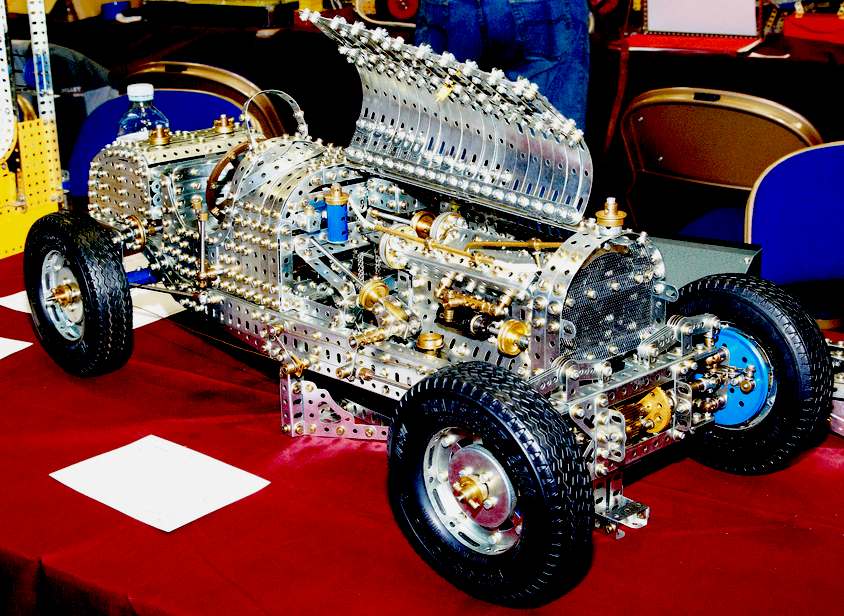
COMPATIBLE PRODUCTS
Some model construction kits are compatible with Meccano. One example is the Swiss brand Stokys, which has been manufactured since 1941. Their elements are mainly made of thick stable metal in order to fit to the general approach of Swiss Quality. Other examples are Exacto and Metallus.
Meccano has always had several compatible products on the market (such as X-Series Meccano, Plastic Meccano, Mogul Toys and Speed-Play). In 2007, a plastic robot named "Spykee" arrived. The robot is controlled using a WiFi interface and has a webcam but cannot climb stairs as is sometimes claimed. It can also be controlled over the Internet and configured as a security camera. The robot is primarily packaged in a single plastic base component and comprises additional bolt-on plastic parts that are present for aesthetic purposes only (i.e. the arms do not function). The robot base does include some standard Meccano hole spacing. By September 2008, the Spykee robot family numbers five, with each robot having different capabilities.
Since the 1920s, construction kits compatible with Meccano were manufactured in the Soviet Union. They did not have a uniform colour scheme, parts could be in any color. Usually the strips and girders were not painted, and the plates could be either unpainted or painted in red, yellow, and blue. In the 1970s, plastic parts were introduced. The "Krugozor" (English: "Outlook"; Russian: "Кругозор") plant in Moscow produced some sets which included electrical motors and gears. The largest set of the 1970s–1980s was called "Yunost-3" (Russian: "Юность-3") and contained about 200 parts. The "Yunost" ("Adolescence") series were practically identical to Meccano sets with the same number, but there is no evidence of larger sets (equivalent to No. 4 or larger) being produced. There were instructions for building 44 models. Today, many similar kits, mostly Russian and Chinese-produced, are being sold in
Russia.
Unlike the Czech Merkur sets, the Soviet ones used mixed Metric and Imperial measurements. The spacing between holes was 12.7 mm, or 1/2 inch, the hole diameter was 4.3 mm, or 1/6 inch. The nuts and bolts included were Metric.

Malcolm
Campbell's Railton Blue Bird, Brighton show
WORLDWIDE ACCLAIM
Frank Hornby launched the Meccano Guild in 1919, to encourage boys of all ages—as well as early clubs—to become part of a central organisation, which oversaw club formation, and set guidelines for club proceedings. The Meccano Magazine was used as a means to keep Guild clubs informed of each other's activities (as well as encourage the sales of Meccano).
The International Society of Meccanomen was founded in 1989 in England, nine years after the Liverpool factory closed. This organisation is considered the modern replacement of the Guild system and now has some 600 members in over 30 countries.
Today, over a hundred years since its inception, there are thousands of Meccano enthusiasts worldwide, many clubs and hundreds of websites covering Meccano history, model building instructions and nostalgia. Individuals and companies worldwide still manufacture parts, some long out of production. There are annual Meccano exhibitions around the world, notably in France (at a different venue around May each year) and at Skegness in England (around July every year). Many notable shows also take place in South Africa, Australia and New Zealand each year to name a few.
Publications devoted fully or in part to Meccano included Meccano Magazine from 1916 to 1981, and numerous Special Model Leaflets aimed at serious enthusiasts, on how to construct very large, complex models and machines. Some models use many more parts than an entire Set 10. The original large models from the 1930s model leaflets are called the Meccano Super Models, often popular at Meccano and other model engineering exhibitions and sometimes used as nostalgic showpieces by retailers. Modern dedicated publications include: Constructor Quarterly, The International Meccanoman and the ModelPlans series of instructions. These feature large model instructions and ideas for enthusiasts. There are also a myriad of club-generated periodicals, featuring Meccano content and keeping enthusiasts in touch.
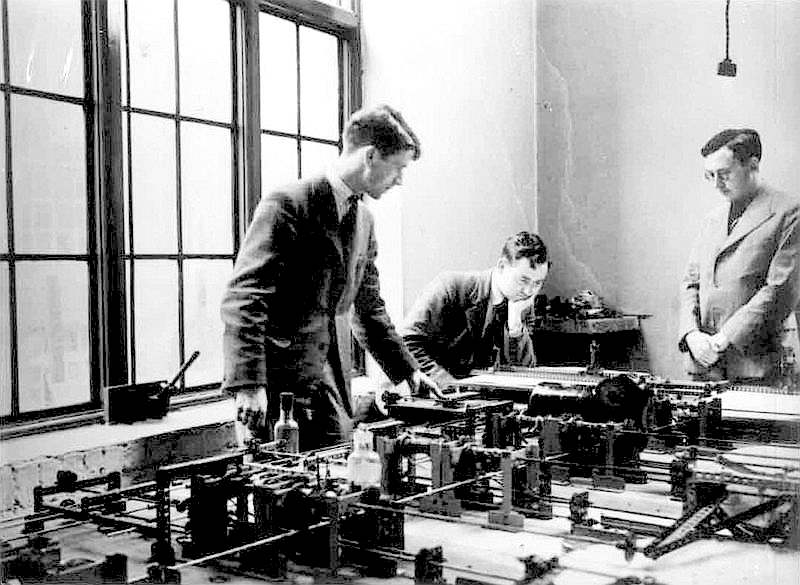
MOTAT's Meccano differential analyser in use at the
Cambridge University Mathematics Laboratory, c. 1937. The person on the right is Dr. Maurice Wilkes, who was in charge of it at the time.
DIFFERENTIAL ANALYSER
In 1934, Meccano began to be used in the construction of differential analysers, a type of analogue computer used to solve differential equations which has long since become obsolete. Though invented on paper in the 19th century, the first such machine had only been built in 1931, and normally they would be built by specialist manufacturers, at great cost. For example, in 1947, UCLA in the USA installed a differential analyser built for them by General Electric at a cost of $125,000. However, a "proof of concept" model of a differential analyser which made extensive use of Meccano parts was built at Manchester University, UK, in 1934, by Douglas Hartree and Arthur Porter: use of Meccano meant that the machine was cheap to build, and it proved "accurate enough for the solution of many scientific problems". This machine is now in the Science Museum, Exhibition Road, London, England. A similar machine built by J.B. Bratt at Cambridge University in 1935 is now in the Museum of Transport and Technology (MOTAT) collection in Auckland, New Zealand. A memorandum written for the British military's Armament Research Department in 1944 describes how this same machine was modified during World War II for improved reliability and enhanced capability, and identifies its wartime applications as including research on the flow of heat, explosive detonations, and simulations of transmission lines. After a lengthy period of neglect, a restoration effort began in 2003, and a successful "full run through" of this machine was completed on December 16, 2008.
In 2005, Tim Robinson displayed his own Meccano differential analyser at the Computer History Museum, at Mountain View, California, USA, and Robinson has also built and exhibited two models of Charles Babbage's difference engine, also using Meccano.
In 1990 Meccano S.A. built a giant Ferris wheel in France. It was modelled after the original 1893 Ferris Wheel built by George Washington Gale Ferris, Jr. at the World's Columbian Exposition at Chicago and was shipped to the United States to promote "Erector Meccano" after Meccano S.A. had bought out the "Erector" trade name and began selling Meccano sets in the U.S. It went on display in New York City after which it was purchased by Ripley's Believe It or Not! and put on display in their St. Augustine, Florida museum. The model, (at the time) the largest (by size) is 6.5 metres (21.3 ft) high, weighs 544 kilograms (1,200 pounds), was made from 19,507 pieces, 50,560 nuts and bolts, and took 1,239 hours to
construct. At this mass and size, some deviation from Meccano-only parts was a necessity, to prevent it collapsing (mainly in the structural spokes). The largest model by mass would certainly be in contention but some models have topped 600 kg.
A recent large model, weighing approximately 500 kg and 23m long, was built in September 2009 by TV presenter James May and a team of volunteers from the engineering department of the University of Liverpool, who created a Meccano bridge spanning the Leeds and Liverpool Canal in Liverpool. As with other models of this size and weight some non-Meccano parts were used. It was built from "[about] 100,000 pieces of real Meccano", taking 1,100 hours, and consisted of a 9 metre (29.5 ft) "swing bridge" section, and a 12 metre (39.4 ft) "drawbridge" section.
Meccano remains a very versatile constructional medium. Almost any mechanical device can be built with it, from structures, to complex working cranes, automatic gearboxes or clocks. Meccano is frequently used to prototype new ideas and inventions. Model realisation using Meccano is limited mainly by the imagination and ingenuity of the builder.
SIR
MALCOLM CAMPBELL'S BLUE BIRDS
Sunbeam
Napier
Lion
Rolls
Royce
K3
K4
DONALD
CAMPBELL'S BLUEBIRDS
K7
CN7
CNM8
Jetstar
LINKS


Tony
Robertson frank hornby trust Meccanopedia
Frank_Hornby_By_Jim_Gamble http://tonyrobertson.mycouncillor.org.uk/2011/12/13/frank-hornby-trust-an-update-3/ http://www.meccanopedia.com/wiki/index.php?title=Frank_Hornby_Notes_And_Pictures_By_Jim_Gamble.Publications http://en.wikipedia.org/wiki/Frank_Hornby http://www.cam.ac.uk/ Tesco
meccano turbo evolution blue http://meccanoman.co.uk/catalog/ http://www.toysrus.co.uk/browse/product/meccano http://www.meccano.com/uk/twitter.html http://www.meccano.com/uk/ Wikipedia
Meccano http://en.wikipedia.org/wiki/Meccano Coniston-power-boat-records-week-gets-underway-k777-is-launched Bluebird-lookalike-takes-a-trip-on-coniston-water Boat-design
k777 bluebird Curse-Bluebird-Replica-Campbells-speedboat-sinks-Coniston K777
Club Daily
Mail Bluebird speedboat http://www.cumbriacrack.com/2011/10/31/coniston-power-boat-records-week-gets-underway-k777-is-launched/ http://www.nwemail.co.uk/news/bluebird-lookalike-takes-a-trip-on-coniston-water-1.893900 http://www.boatdesign.net/forums/boat-design/k777-bluebird-40452.html http://www.dailymail.co.uk/news/article-2057326/Curse-Bluebird-Replica-Campbells-speedboat-sinks-Coniston.html http://www.k777club.com/ Rebuilt wreckage RC
groups forums http://www.rcgroups.com/forums/showthread.php?t=1959632
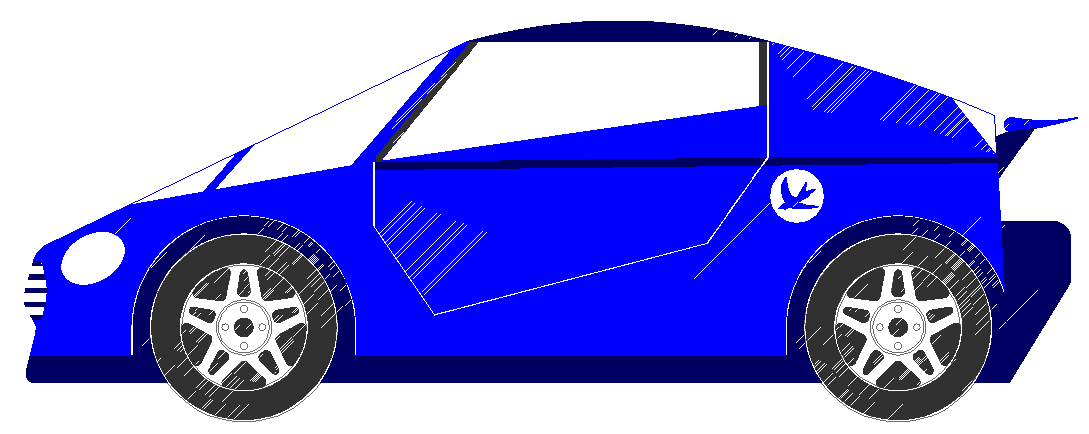
The bluebird legend lives on: The first road car to use our
blue bird
trademark is
the electrically powered Ecostar DC50, a long distance runner that uses cartridges to recharge instantly (in under a
minute). This is achieved with built in
Bluebird™
power loaders, enabling the car to
recharge at any road stop where a cartridge is waiting to be picked up. The
DC50 may be upgraded for clubman circuit events.
|













